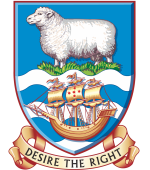Southern Blue Whiting - BLU
Common Names
Southern blue whiting (UK), Bacadilla/Merluza polaca (SP), Blekitek (PD), Patagonia-minamidara (JA)
Scientific Name
Micromesistius australis
Description
Body elongate, somewhat compressed, highest at level of anus. Head moderate, slightly more than ¼ length of body; cephalic sensory pores obvious. Interorbital flat and narrow, its width about 0.9 times diameter of eye. Eye rather large in size, about 0.6 times length of upper jaw. No barbel on tip of lower jaw. Teeth on upper consisting of two rows, inner row finely villiform and numerous, outer row depressible inward, slightly larger and sparse; teeth on lower jaw in one row, long, sparse and depressible inward; a few depressible small teeth on vomer; no teeth on palatine. Scales cycloid, thin, small and loose. Pelvic fin origin situated anterior to pectoral fin, with second fin ray elongate. Pectoral fin moderate in size. Three dorsal fins, all with short bases. First anal fin origin slightly before dorsal origin, with long base, second anal fin origin equal to third dorsal, with short base. Caudal fin with a small notch. Steely blue-grey above, with light sides and milky white belly. Numerous small black spots on scales and fin membranes. Tips of jaws and caudal fin blackish.
Size Range
15 to 60 cm in total length.
Depth Range
Generally greater than 150m.
Distribution
Throughout the FICZ, but the fish congregate off Cape Meredith (West Falklands) in 200-350 m water, moving inshore to spawn.
Fishery Status
The main fishery for this species occurs from mid August to the end of October/mid November, with a secondary period during December and January. As the fishery progresses, the post-spawning stocks move offshore, into water deeper than 500m and are fished until they disperse to the south. Heavily parasitised with Kudoa sp. which releases enzymes into the flesh when the fish dies, rapidly reducing the quality of the flesh. For this reason, the species is of low commercial value. Fish meal or fish paste is made with the badly parasitised individuals, while the better quality individuals are filleted or headed/gutted. Some surimi vessels only make this paste-like product to be used as a protein base for a wide variety of products like imitation crabsticks, fish cakes, and so on.
Additional Information
Last major fishery of the year.

